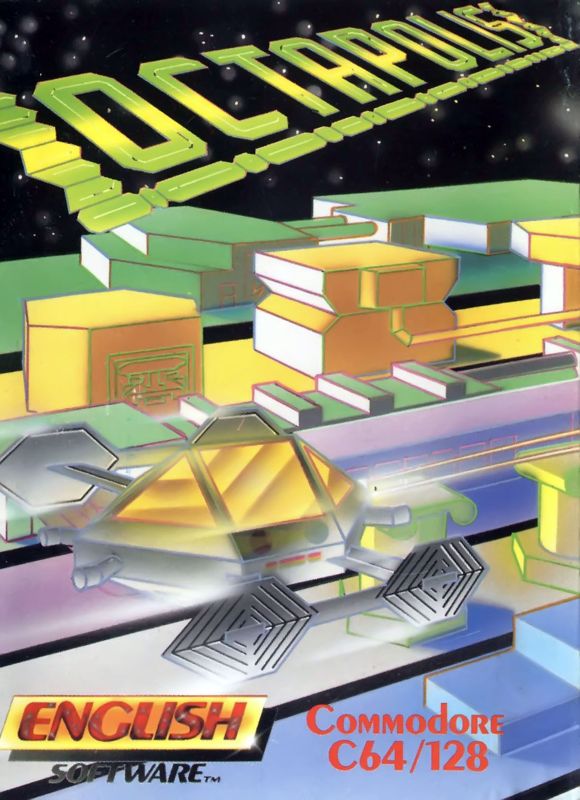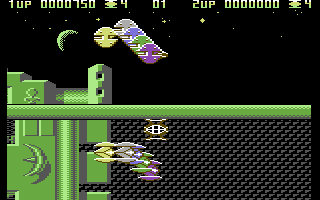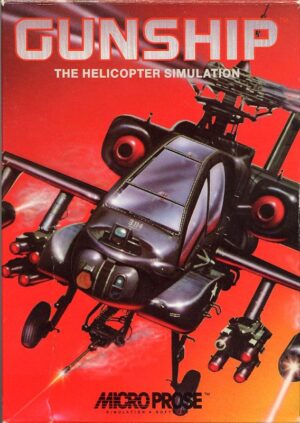Retro Replay Review
Gameplay
Octapolis offers a unique blend of shooter and platformer mechanics that keeps players on their toes from start to finish. In each of the eight cities, you’ll encounter a split-screen shooter segment where your ship appears from both side-scrolling and top-down perspectives simultaneously. This dual view demands careful spatial awareness: you must dodge enemy fire in the upper half while weaving through obstacles in the lower half. Holding down the fire button shifts control to lateral movements, allowing strafing left and right—an elegant solution that adds depth to the traditional shoot ’em up formula.
(HEY YOU!! We hope you enjoy! We try not to run ads. So basically, this is a very expensive hobby running this site. Please consider joining us for updates, forums, and more. Network w/ us to make some cash or friends while retro gaming, and you can win some free retro games for posting. Okay, carry on 👍)
Once you’ve cleared enough enemies or outlasted the timer, you must pilot your ship to a designated docking area to dock and enter the city. The transition feels organic, as though you’re truly breaching Octapolis’s defenses. Inside the city, the gameplay pivots to a five-room platform challenge. Your character can only jump in a preset arc and fire at “evil eyes” for bonus points; everything else is a hazard you must dodge. The lack of mid-air control raises the stakes, forcing you to time your jumps precisely and memorize enemy patterns.
The game strikes a fine balance between frantic action and puzzle-like precision. You learn quickly that surviving the inner city rooms often depends on pattern recognition rather than brute force. Since most enemies can’t be defeated, success hinges on patience and careful observation. While the split-screen shooter portion rewards quick reflexes, the platformer rooms test your memory and decision-making under pressure. Together, these alternating phases maintain a refreshing rhythm that prevents the gameplay from feeling repetitive.
Graphics
Visually, Octapolis embraces a retro-futuristic aesthetic, blending vibrant pixel art with smooth animations. The dual-view shooter levels feature detailed starfields and neon-lit enemy designs that pop against dark space backdrops. The two distinct camera angles are rendered with clarity, ensuring you never lose track of your ship’s position. Explosions and weapon effects are colorful without being distracting, striking a perfect balance for high-tempo dogfights.
In the city interiors, the palette shifts to earthy tones and shadowy corridors, evoking a mysterious atmosphere that underscores the telekinetic powers at play. Each of the five rooms per city has its own visual identity—some are festooned with alien glyphs, others with flickering electric barriers, and a few even hint at the ancient architecture that gave rise to Octapolis’s mental defenses. The “evil eyes” you destroy emit a satisfying glow when hit, making every bonus point feel earned.
On modern hardware, Octapolis runs at a steady framerate, and load times between the shooter and platformer sections are minimal. The HUD displays only essential information—ammo indicators, remaining time, and score—so the visuals never feel cluttered. Subtle background animations, such as drifting clouds of cosmic dust or swaying city banners, add life to each level without sacrificing performance. Overall, the graphics serve the gameplay brilliantly, drawing you into the conflict against the Galactic Imperium’s last stronghold.
Story
The narrative backdrop of Octapolis is both grand in scope and refreshingly concise. By the year 3897, the Galactic Imperium has all but subdued the galaxy, save for one lone planet. Octapolis’s telekinetic defenses have thwarted every pilot who dared approach, turning elites into bumbling wrecks and frying the most advanced A.I.s. After two centuries of frustration, the Galactic Intelligence Agency discovers one pilot immune to these mental forces—and you assume that role.
Your mission is straightforward: conquer all eight cities and deactivate the powerful defense system protecting the planet. Each city represents a stage in this epic campaign, taking you deeper into Octapolis’s heart and closer to the ultimate core. The world-building emerges through brief cutscenes and level intros, painting a picture of a planet whose psychic power is as beautiful as it is deadly. Despite minimal storytelling, the game conveys stakes clearly—failure means the Imperium never completes its conquest, while success could tip the galactic balance.
Dialogue is sparse but purposeful, delivered via in-game text that flashes between transitions. It never overstays its welcome, letting the action speak for itself. The sense of isolation as you progress is palpable: even though you face waves of mechanical and psychic foes, the narrative consistently reminds you that Octapolis’s true threat is its sentient defense grid. This concise storytelling approach ensures players remain focused on the task while still feeling the weight of the Imperium’s ambitions.
Overall Experience
Octapolis delivers a thrilling ride that cleverly combines two classic genres into a cohesive, challenging package. The alternating shooter and platformer sections keep the pacing dynamic, and the split-screen mechanic gives the game an identity of its own. Whether you’re weaving through space debris in the upper pane or timing jumps across city rooftops in the lower, the adrenaline never lets up.
While the difficulty curve can be steep—especially in later cities where enemy density intensifies and jump arcs demand pixel-perfect timing—mastery is deeply rewarding. Each victory feels earned, from blasting through a gauntlet of alien ships to outmaneuvering the imperious “evil eyes” in the city depths. The game’s retro visuals and minimalist storytelling only bolster its charm, creating an immersive throwback experience with modern polish.
For players seeking a fast-paced challenge that marries arcade shooting with platforming precision, Octapolis stands out as a memorable title. Its inventive split-screen design, atmospheric graphics, and straightforward yet compelling narrative make it an ideal choice for both retro enthusiasts and newcomers eager for a unique twist on classic genres. Prepare to dock, jump, and fire your way to galactic glory—Octapolis awaits.
 Retro Replay Retro Replay gaming reviews, news, emulation, geek stuff and more!
Retro Replay Retro Replay gaming reviews, news, emulation, geek stuff and more!









Reviews
There are no reviews yet.